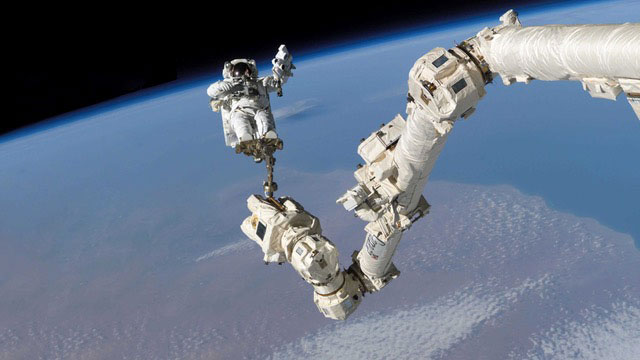Did you know Canada was the third country in space in 1962, after Russia and the USA? Just a first accomplishment of many. Today, Canada is an acknowledged world leader in space robotics, satellite communications, Earth observation and space science. Our diverse space sector includes some of Canada’s most innovative companies, universities, and research institutions. It generates $5.5 billion in revenue annually, employs 10,000 Canadians in highly skilled jobs — 41% of the workforce hold university degrees, supports nearly 22,000 more Canadian jobs and contributes $2.3 billion to Canada’s GDP.
How are things looking for Canada’s future in space? Well, it depends.
Canada’s investment in space has been declining for many years, and we’ve had no long-term space plan for decades. Since 1992, we have fallen from 8th to 18th amongst all space-faring countries in spending as a share of GDP. And just as the economic opportunities of space are increasing exponentially. The current space-related global market opportunity is estimated to be $380 billion and growing fast.

2005-08-03 NASA astronaut, Stephen Robinson attached to Canadarm2 during a spacewalk. ©NASA

Mike Greenley
Mike Greenley is the Group President of MDA, a Maxar Technologies company. MDA is an internationally recognized leader in advanced radar satellite systems and infrastructure, ground systems, space robotics and sensors, satellite antennas, electronics and payloads, surveillance and intelligence solutions, and defence systems. Mr. Greenley’s responsibilities include all MDA lines of business and its more than 1,900 employees across Canada and the United Kingdom. Mr. Greenley has over 25 years of experience in the defence and security business, with broad experience serving the Land, Air, Maritime, Joint, and Public Safety sectors.
Mike Greenley, Group President, MDA ©Maxar
Not only are we losing ground to other countries, but an important door, now open, will soon close.
Canada’s international space exploration partners, including the US, Europe, and Japan, are planning a return to the Moon in the 2020s with a small space station, the Lunar Gateway. It will be the base for lunar surface exploration, a science lab, a communications hub and a staging platform to explore deeper space.
The international community expects Canada to provide advanced robotics for the Lunar Gateway – a third generation of the iconic Canadarm. It’s a strategic and fairly modest financial commitment that secures our place as a full partner in the mission, keeping the door open for our astronauts to participate in future space missions and, potentially, to further contributions like lunar surface rovers and space medicine technologies. However, Canada needs to decide soon whether we will participate.
Choosing to invest in space means holding onto our 60-year legacy; to our leadership position in space science and technology; to our vibrant and innovative space sector; to our brightest young engineers, scientists and mathematicians; to the beloved Canadarm program (92% of Canadians say “when I think about or see the Canadarm, I feel proud”); and to the exciting opportunities of the new space economy.
#DontLetGoCanada


